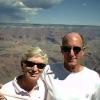Can a really aggressive forward slip on final ever produce a spin?
-
Members Online
- ta2too
- ProtoFly
- Pinecone
- jamiesj
- Culver LFA
- Marc_B
- NickG
- rklems
- Alan Maurer
- Paul Thomas
- kris_adams
- GeeBee
- N201MKTurbo
- Hank
- Utah20Gflyer
- DCarlton
- hypertech
- TxAviator
- sw1024
- patriot3300
- BaldEagle
- takair
- 00-Negative
- sheriffburrell
- Sabremech
- dkkim73
- 1980Mooney
- RonM
- Denise
- Jsno
- exM20K
- Parker_Woodruff
- Irek
- PaulM
- Matthew P
- DXB
- Wapst
- PeterRus
- PT20J


Recommended Posts
Join the conversation
You can post now and register later. If you have an account, sign in now to post with your account.